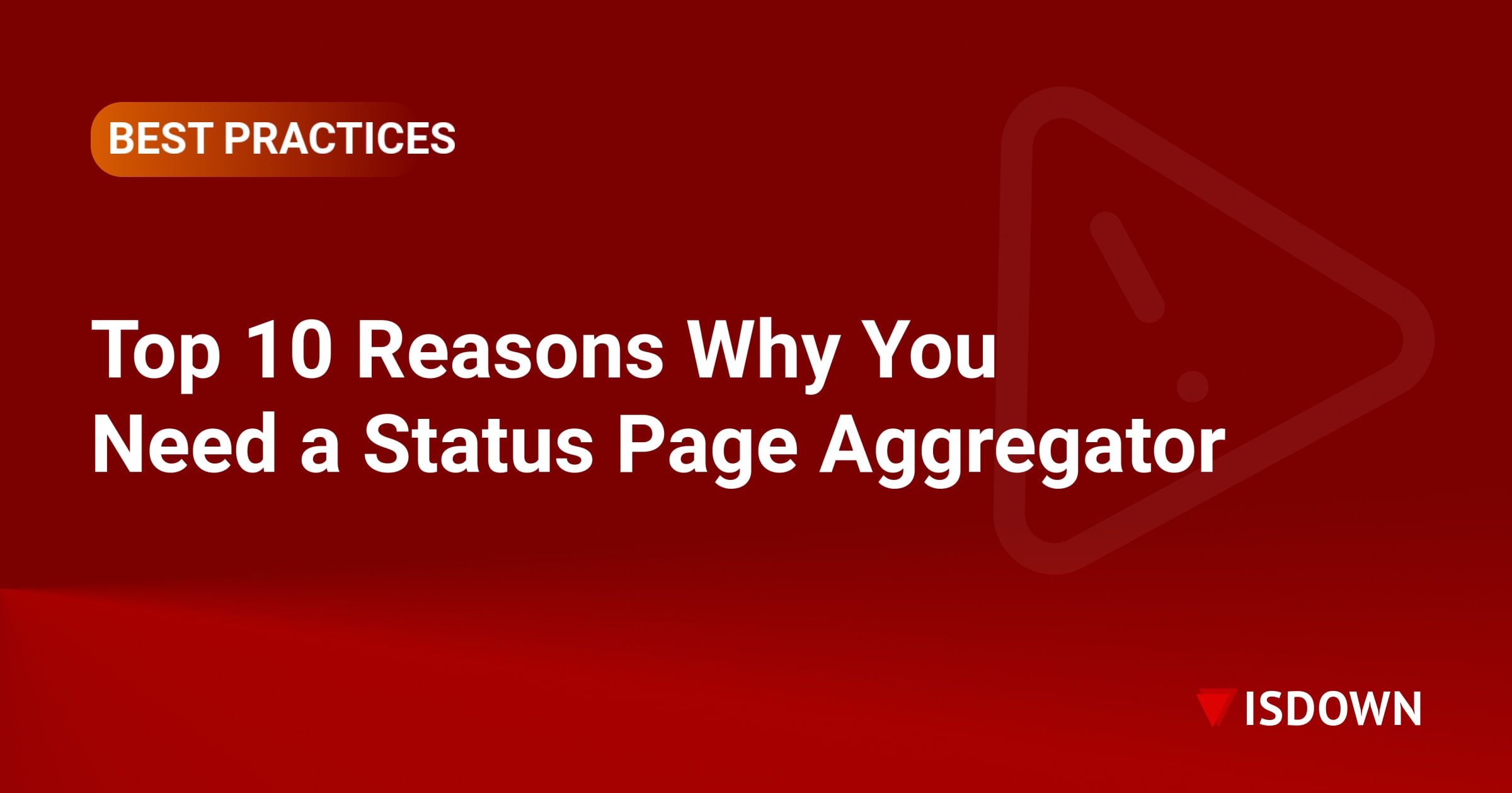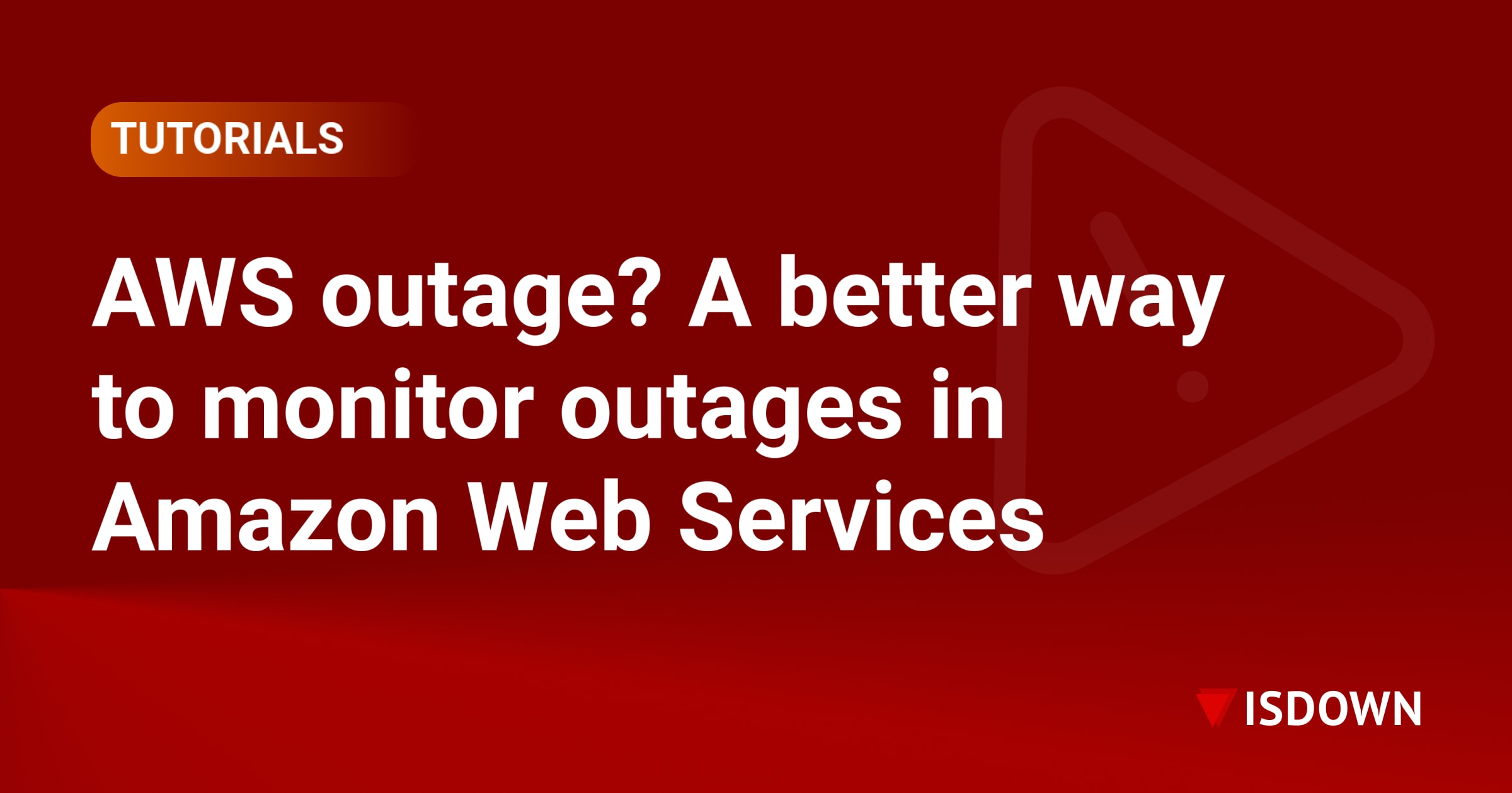7 Clear Signs Your Team Needs Centralized Monitoring
Managing multiple systems without centralized monitoring is like trying to watch security footage from 20 different screens simultaneously. You might catch some issues, but you'll inevitably miss critical problems until they explode into major incidents.
If your team is struggling with scattered monitoring tools, delayed incident responses, or constant firefighting mode, it's time to evaluate whether you need a centralized monitoring solution. Here are the key warning signs to watch for.
1. Your Team Uses Multiple Monitoring Tools Without Integration
When different team members check different dashboards for different services, you're setting yourself up for failure. This fragmentation creates several problems:
- Critical alerts get lost in the noise
- Team members waste time switching between platforms
- No single source of truth for system health
- Correlation between related issues becomes nearly impossible
Centralized monitoring brings all your data streams into one unified view, making it easier to spot patterns and respond quickly to incidents.
2. Incidents Take Too Long to Detect and Resolve
If customers are reporting issues before your monitoring catches them, you have a serious problem. Delayed detection often stems from:
- Alerts going to the wrong people
- Important notifications buried in low-priority noise
- Lack of real-time visibility across all systems
- Manual checking processes instead of automated alerts
With centralized monitoring, you can improve MTTR and MTBF by ensuring the right alerts reach the right people immediately.
3. Third-Party Dependencies Cause Surprise Outages
Modern applications rely heavily on external services like payment processors, CDNs, and cloud providers. When these services fail, your application fails – but without proper monitoring, you might not know why.
Signs you're not monitoring third-party dependencies effectively:
- Customer complaints about features "randomly" not working
- Spending hours troubleshooting your code when the problem is external
- No visibility into vendor SLAs or performance trends
- Missing critical vendor maintenance windows
A status page aggregator can help you track all your third-party dependencies in one place, preventing surprise outages from catching you off guard.
4. Your Team Suffers from Alert Fatigue
When everything is urgent, nothing is urgent. Alert fatigue occurs when teams receive so many notifications that they start ignoring them – including the critical ones.
Symptoms of alert fatigue include:
- Team members muting notification channels
- Important alerts getting missed in the flood
- Delayed responses to genuine emergencies
- Burnout from constant interruptions
Centralized monitoring helps you consolidate and prioritize alerts, ensuring only the most critical issues demand immediate attention.
5. Lack of Historical Data and Trend Analysis
Without centralized monitoring, historical data often lives in silos across different tools. This makes it nearly impossible to:
- Identify recurring patterns
- Predict potential failures
- Measure improvement over time
- Build effective runbooks for common issues
Centralized systems aggregate historical data, enabling you to spot trends and prevent issues before they impact users.
6. Communication Breaks Down During Incidents
When an incident strikes, clear communication is crucial. But without centralized monitoring, teams often struggle with:
- Multiple conflicting status updates
- Uncertainty about who's working on what
- Customers left in the dark about ongoing issues
- Post-incident reviews lacking complete data
Integrating your monitoring with communication tools like Slack or Microsoft Teams ensures everyone stays informed throughout the incident lifecycle.
7. Scaling Becomes a Nightmare
As your infrastructure grows, managing disparate monitoring tools becomes exponentially harder. Warning signs include:
- New services going unmonitored for weeks
- Onboarding new team members takes forever
- Monitoring costs spiraling out of control
- Configuration drift between similar services
Centralized monitoring scales with your organization, providing consistent monitoring standards across all services.
Taking Action: Implementing Centralized Monitoring
If you recognize several of these signs in your organization, it's time to consider centralized monitoring. Start by:
- Auditing your current monitoring landscape
- Identifying critical services and dependencies
- Evaluating centralized monitoring platforms
- Planning a phased migration approach
Tools like IsDown can help consolidate third-party monitoring into your existing stack, providing a unified view of both internal and external dependencies. By bringing everything together, you'll reduce response times, improve team efficiency, and deliver better reliability to your customers.
The goal isn't just to collect more data – it's to make that data actionable. Centralized monitoring transforms scattered information into clear insights, helping your team move from reactive firefighting to proactive system management.
Frequently Asked Questions
What exactly is centralized monitoring?
Centralized monitoring is a system that aggregates data from multiple sources into a single platform. Instead of checking dozens of different dashboards and tools, teams can view all their metrics, alerts, and system health indicators in one unified interface. This includes monitoring your own infrastructure, applications, and third-party services your business depends on.
How much does centralized monitoring typically cost?
Costs vary widely depending on your needs and scale. Basic solutions might start at $50-100 per month for small teams, while enterprise solutions can run thousands per month. However, the real question is ROI – most teams find that centralized monitoring pays for itself through reduced downtime, faster incident resolution, and improved team efficiency.
Can we implement centralized monitoring gradually?
Absolutely. Most organizations take a phased approach, starting with their most critical services and expanding over time. You might begin by centralizing third-party monitoring, then add application metrics, and finally incorporate infrastructure monitoring. This gradual approach helps teams adapt without overwhelming them.
What's the difference between centralized monitoring and observability?
While related, they serve different purposes. Centralized monitoring focuses on aggregating alerts and metrics from various sources into one place. Observability goes deeper, providing detailed insights into system behavior and helping you understand why issues occur. Many modern platforms combine both approaches.
How do we avoid alert fatigue with centralized monitoring?
Centralized monitoring actually helps reduce alert fatigue by providing better filtering and prioritization options. You can set up intelligent routing rules, consolidate related alerts, and ensure only critical issues trigger immediate notifications. The key is spending time upfront to configure alerting thresholds and escalation policies properly.
Will centralized monitoring work with our existing tools?
Most centralized monitoring platforms are designed to integrate with popular tools and services. Look for solutions that offer APIs, webhooks, and pre-built integrations with your current stack. The goal is to enhance your existing setup, not replace everything at once.
 Nuno Tomas
Founder of IsDown
Nuno Tomas
Founder of IsDown
The Status Page Aggregator with Early Outage Detection
Unified vendor dashboard
Early Outage Detection
Stop the Support Flood
Related articles
Never again lose time looking in the wrong place
14-day free trial · No credit card required · No code required




